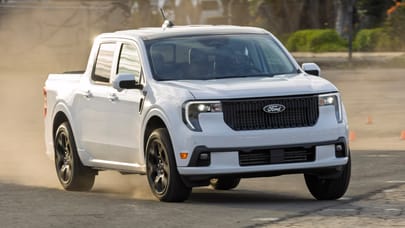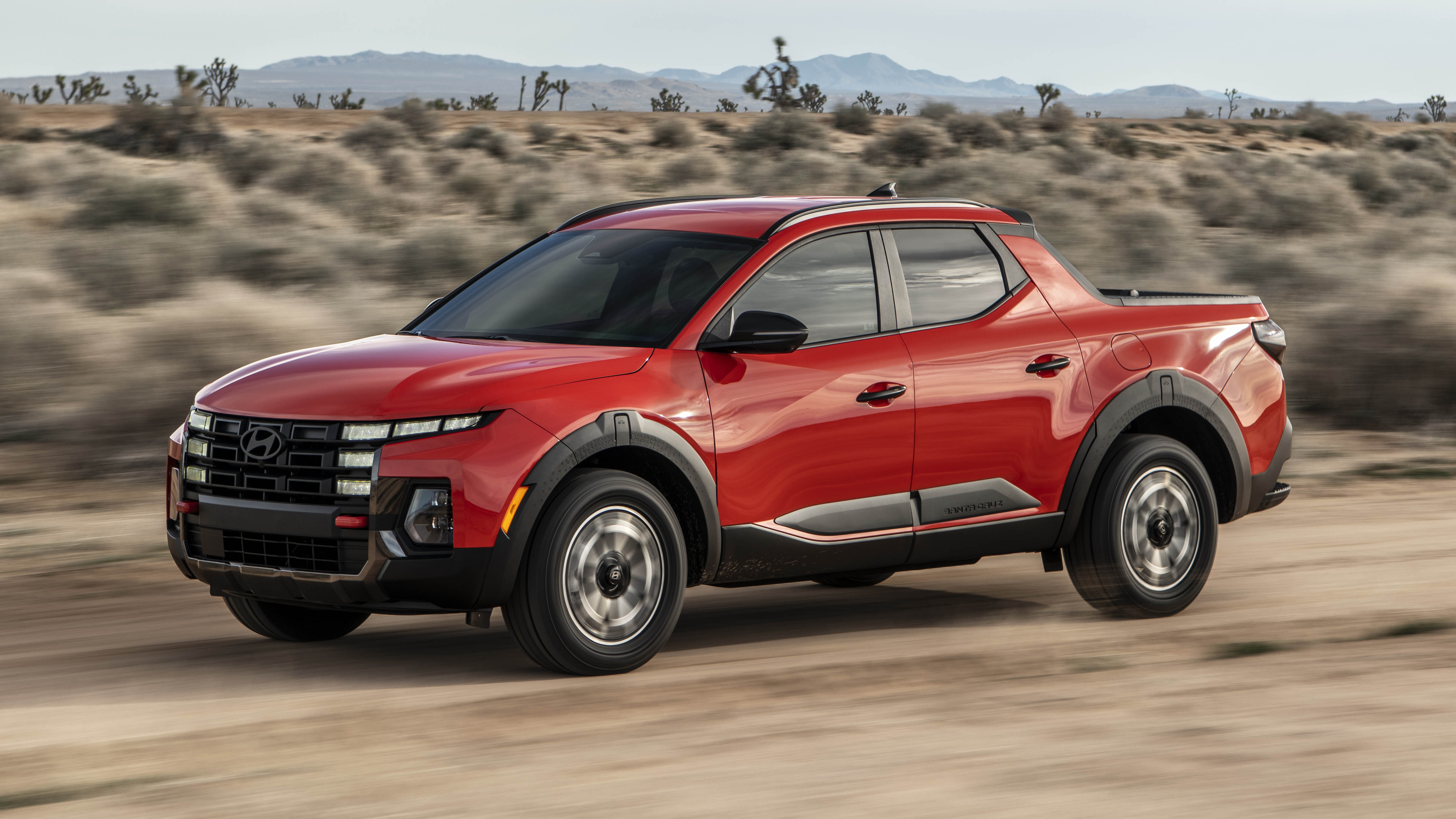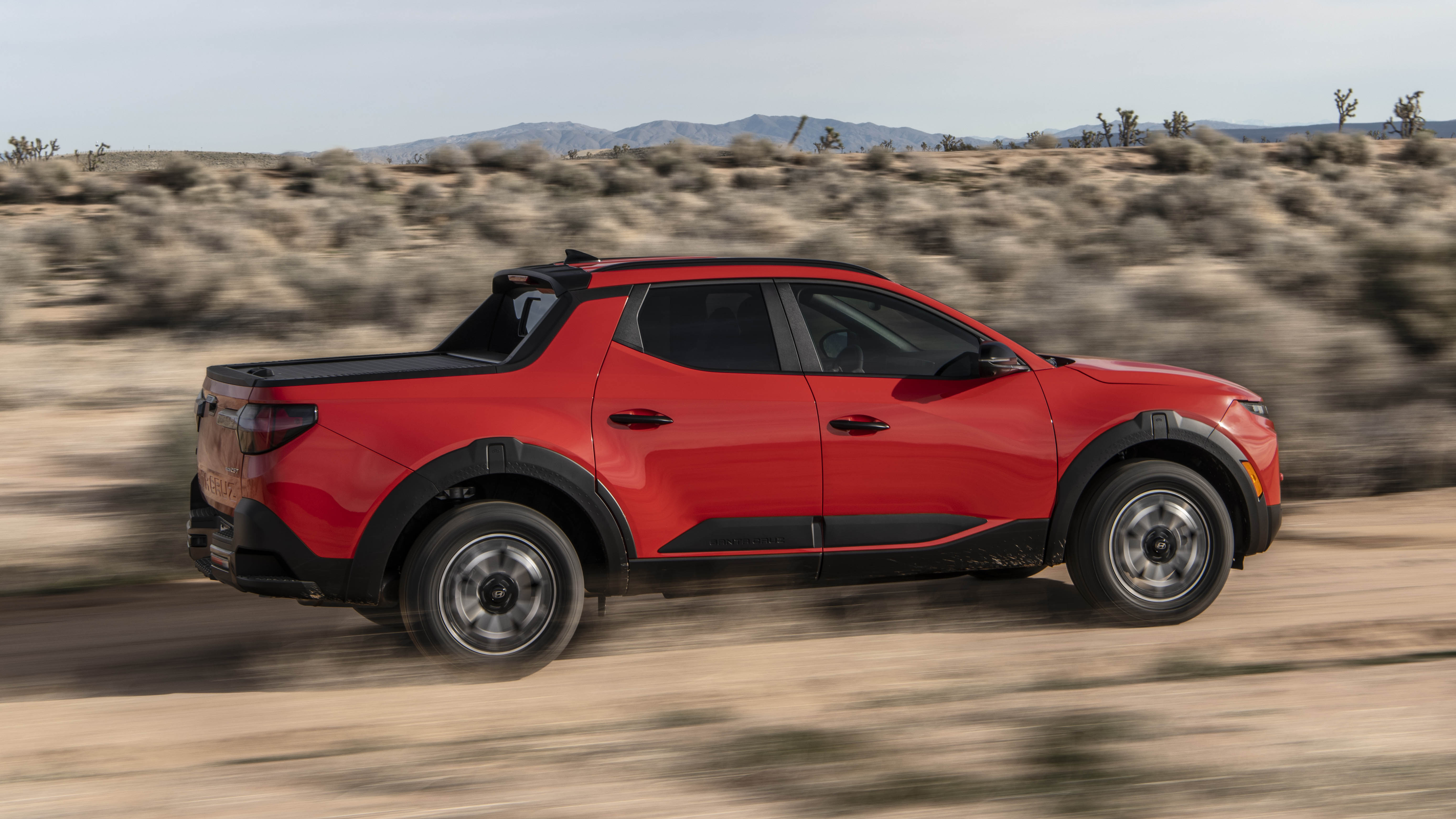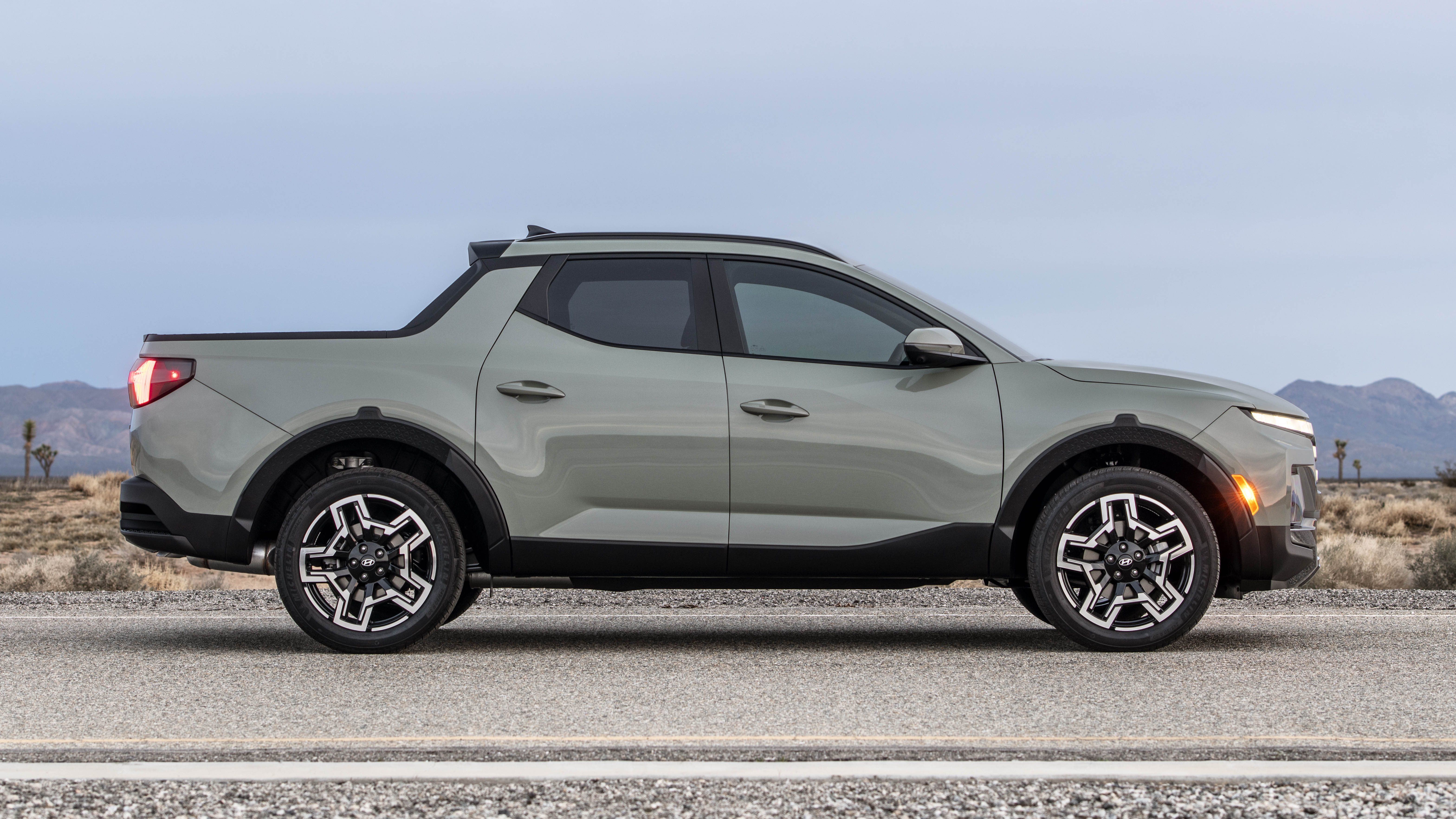
Hyundai Santa Cruz (US) review
Good stuff
Slick looks, punchy turbo engine, endlessly functional
Bad stuff
No hybrid option, base engine is pokey, gets expensive with a turbo
Overview
What is it?
The Hyundai Santa Cruz is a genre-bending little trucklet, combining the efficient and easy-driving attributes of a compact crossover with the usefulness of a pickup. Just because you want a full-size truck doesn’t mean you need a full-size truck, and for a huge number of pickup buyers, the Santa Cruz is a right-sized and way more affordable solution.
Why does it look like a Hyundai Tucson?
Because it pretty much is a Hyundai Tucson. From the B-pillar forward, the Santa Cruz shares the majority of its design with Hyundai’s compact crossover, and the bulk of the interior is shared between these two platform-mates, as well. Love the way the triangle-tastic Tucson looks? Cool, you’ll dig the Santa Cruz. Besides, what other pickup truck has this kind of front-end LED square footage?
Oh, and because the Tucson was facelifted in March 2024, so was the Santa Cruz. That brought with it the slightly more blocky front end, an updated interior with much screenage and a refreshed, off-road ready XRT trim. More on that later.
What are the engine options?
Things under the skin didn't change with the facelift, so the base powertrain is still a 2.5-liter naturally aspirated inline-4 with 191hp and 181lb ft of torque. This engine is, in a word, anemic. It’s slow and stodgy, and you really have to rev the bejesus out of it – especially when accelerating onto the freeway. At least the accompanying eight-speed automatic transmission is buttery smooth.
On the other hand, the uplevel 2.5-liter turbo version is much better suited to the Santa Cruz and comes with the fancier trim levels. With 281hp and 311lb ft, there’s way more usable power – both off the line and while punching it at speed – and the eight-speed dual-clutch gearbox offers swift, smooth shifts. This setup is really lovely, and will be appreciated should you be hauling a load or utilizing the truck’s 5,000-pound max tow rating.
Wait, no hybrid?
Nope, nada. Which is weird, since Hyundai offers the Tucson with both regular hybrid and plug-in hybrid options. Could these powertrains fit in the Santa Cruz? Probably. But it doesn’t make sense for Hyundai to increase build complexity. Then again, Ford can barely keep up with demand for the hybrid engine in its similarly sized Maverick pickup. Hmm.
Can the Santa Cruz do tough guy truck stuff?
Yeah, sort of. Keep in mind, this isn’t a traditional truck with body-on-frame construction, so if serious towing and hauling are your priorities, you’ll need something much more robust.
That’s not to say the Santa Cruz can’t handle some big jobs, though. The truck can transport 1,411 pounds of payload in its bed, and with the turbo engine and all-wheel drive, the Santa Cruz can pull 5,000 pounds (the nat-asp engine is rated to tow 3,500 pounds). What’s more, the bed has a sliding tonneau cover making it easier to cover and carry items without the risk of them getting damaged (or stolen), and you can option all sorts of bed organizers. Versatility for the win.
And then there's that aforementioned XRT trim. That adds a chunky-looking front grille, front tow hooks, 18-inch 'wrench-inspired' wheels, all-terrain tires and new front and rear bumpers that allow for an increased approach angle.
So, will the Santa Cruz off-road?
Again, sort of. All Santa Cruz variants have 8.6 inches of ground clearance, which isn’t bad, and you can swap from front-wheel drive to all-wheel drive if you've just gone for the naturally aspirated engine (the turbo gets all-wheel drive as standard). The XRT is the one you'll want if you are heading off-road, but although there's an AWD lock to ensure power is going to all-four wheels, there's no low-ratio transmission and no locking diffs.
How much does this lil' guy cost?
You’ll need at least $28,500 to get into a base Santa Cruz, and an extra $1,500 if you want to add all-wheel drive. If you want the turbo engine (you do), that costs a whole lot more: a minimum of $40,000. The most expensive Santa Cruz Limited comes in at $42,500. Not horrible, all things considered.
Does the Santa Cruz have any competitors?
There's one obvious shout: the Ford Maverick. The Maverick’s biggest advantage is that it’s a lot less expensive to start, priced below $25,000. It also offers a super efficient and super smooth hybrid engine option, though this can only be paired with front-wheel drive. The Maverick doesn’t have as many fancy flourishes or interior technologies, but fully loaded it'll only just tip over the $40,000 mark. Just saying. Other potential rivals include the Honda Ridgeline and - if you don't need the open bed - the Subaru Outback.
What's the verdict?
The Hyundai Santa Cruz is the perfect pickup for people who don’t need the immense capabilities of a lumbering, cumbersome full-size, body-on-frame truck. The updated Santa Cruz is great to drive, wonderfully appointed, plenty functional, and looks great, too.
Plus, it’s priced to compete, undercutting the bottom ends of more traditional midsize trucks. Starting below $30,000, the Santa Cruz is extremely affordable. However, the best versions of this truck cost a lot more, so if you can afford to spend big, you’ll get a much nicer pickup – one you’d love to live with over the long haul.
The Rivals
Trending this week
- Car Review
Renault Clio








